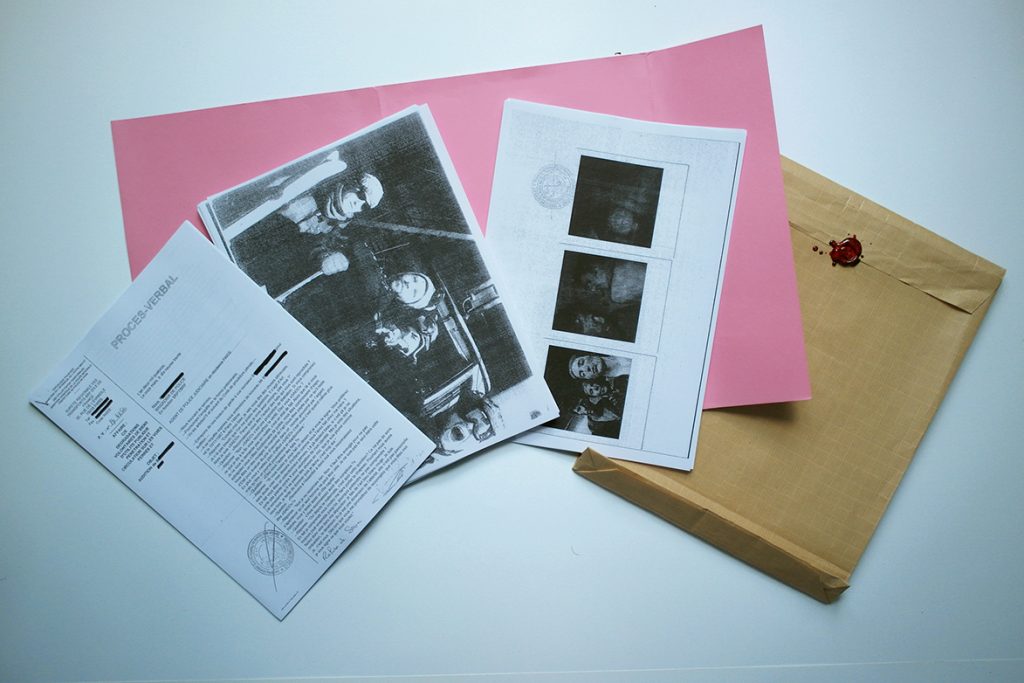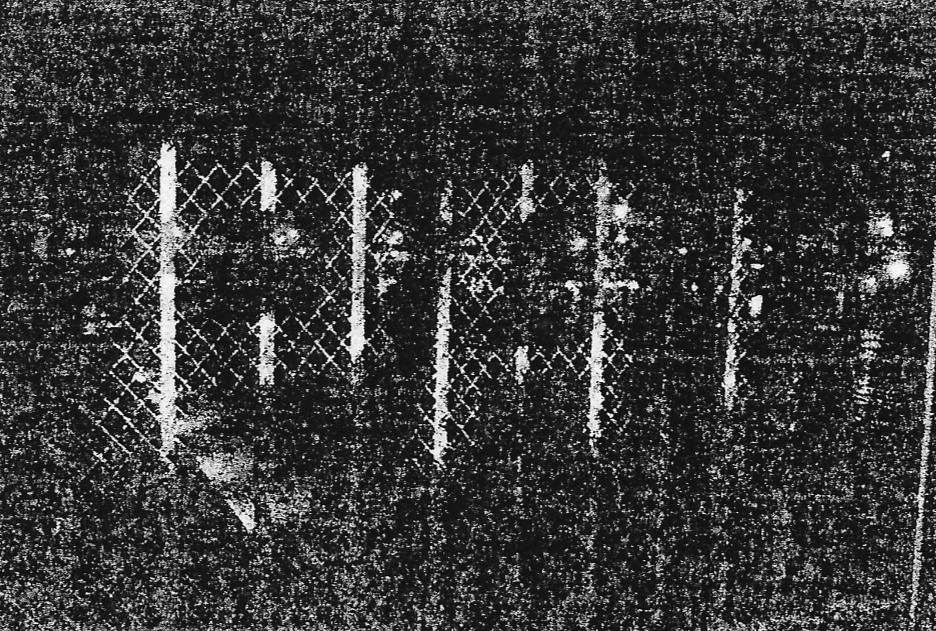DO UT DES malleus maleficarum


Lors de l’exposition « Phases » FRAC PACA 2016
Sérigraphie noir & blanc d’après photographie judiciaire, 70 x 100 cm /
Enveloppe cachetée à la cire: archive raisonnée 2012-2014, photocopies noir & blanc A4 sous enveloppe kraft avec cachet cire et invitation au procès, A5 sur papier Velin /SAEIO.



DO UT DES, 2015
En 2014, SAEIO est arrêté par la brigade anti-tags de Paris pour « dégradations volontaires de bien d’utilité publique, pénétration et circulation sur voie ferrées ». Une procédure judiciaire est ouverte à son encontre ayant pour effet la production de preuves immatérielles (audition, écoute, filatures) et matérielles (documents : rapport de police, photographies, notes sur les appels téléphoniques surveillés …) retraçant le parcours présumé de SAEIO de 2012 à 2014. Suit le jugement en première instance où une centaines de « faits de dégradations vandales » lui sont reprochés et une peine de plus de
40 000 euros d’amende est prononcée. A suivre, ….
En contrepartie, en réponse à ce don, naît un contre-don
« artistique » orchestré par l’artiste : un retournement multi- média mettant en scène SAEIO tel « le point de choc des interactions paradoxales provoquées par la rencontre justice/graffiti » et de leurs devenirs art. Les documents judiciaires deviennent une archive raisonnée et des œuvres grand format dont le prix de vente est fixé en fonction de coût de nettoyage, le procès un récit, les agents des artistes et l’acquéreur se retrouve engagé dans un modèle économique participatif nécessaire au financement de l’amende. Le projet DO UT DES (traduit du latin : je donne pour que tu donne) apporte une lecture distincte des faits d’origine en mélangeant le regard supposé objectif et distant de la police et celui de SAEIO qui artisise ce travail d’enquête et de procès. Cette symbiose créait alors une interaction inédite questionnant le statut paradoxal du graffiti aux yeux de l’art, de la loi et de
la société.
Laura Morsch-Kihn
1 Citation de SAEIO, « Eloge de la décadence, conversation avec SAEIO et Laura Morsch-Kihn », https://lenouvelespritduvandalisme.com/, « Art et Justice », n°4, mai 2015, Paris.
2 DO UT DES. SAEIO : archive raisonnée 2012-2014, édition 70 exemplaires, Paris, juillet 2015.


In 2014, SAEIO got arrested by Paris’ anti-tagger brigade for « voluntary vandalism on material of public use, entering and circulating on railroad tracks”. A legal procedure was opened against him, based on immaterial (wire-tapping, hearings, tailing) and material (documents such as police reports, pictures, transcripts of his phone calles …) evidence retracing SAEIO’s presumed history from 2012 to 2014. Followed up by an immediate hearing where he was reproached with about a hundred “acts of vandalism” and a fine of over 40 000€ is delivered. To be continued…
In counterpart, as a response to this material gift from the police, is born an “artistic” counter-gift by the artist.: a multimedia reversal where SAEIO is staged as “the epicenter of the paradoxical interactions provoked when graffiti and the legal system meet” and how it has become art in itself. The legal documents become an annotated catalogue and produce large format works whose price is established by declared cleanup cost, the trial becomes a narrative, the artist’s agents and their buyers now become an inherent part of the participative economic model created to finance the fine. The DO UT DES project (translated from latin to: I give so you can give) brings a distinct interpretation of the original events by mixing the supposedly distant and objective view of the police to SAEIO’s who articizes this process of investigations and trial. This symbiosis then creates an unprecedented interaction questioning the paradoxal status of graffiti in relations to art, the law and society.
1 Quote of SAEIO in, « Eloge de la décadence, conversation avec SAEIO et Laura Morsch-Kihn », https://lenouvelespritduvandalisme.com/, « Art et Justice », n°4, mai 2015, Paris.
2 DO UT DES. SAEIO : archive raisonnée 2012-2014, édition 70 exemplaires, Paris, juillet 2015.



Pièces à conviction : pantalon jeans, basket et veste /
Documentaire d’investigation, vidéo, couleur, son, 19’08’’ / ( Images SAEIO & Alexandre Ferreira )